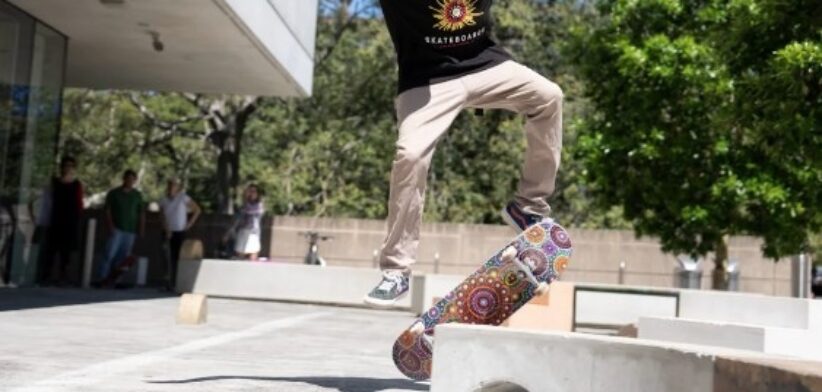City planners are being encouraged to leverage the popularity of the urban sports culture to activate public art and help address social issues.
University of Sydney Visual Arts Senior Lecturer Dr Sanne Mestrom said public art and urban sport could revolutionise city planning and empower adolescents.
Dr Mestrom said the paring could address the underrepresentation of young women, non-binary individuals and other non-traditional users of urban spaces.
“Good public art can transform typically unwelcoming urban landscapes into inclusive canvases for creative expression and play.”
She said contemporary urban sports, including skateboarding, parkour, roller skating and BMX, had evolved from youth and subculture movements to competitive sports on the world stage.
“The rise in popularity of urban sport culture gives us a huge opportunity to harness public art as a tool to create urban landscapes and public spaces that are dynamic, inclusive, and safe.”
Sociologist Dr Indigo Willing said contemporary urban sport infrastructure that existed today could be “quite brutalist and intimidating in form”.
“For example, a concrete playground with no colour, garden, or areas for parents to sit,” Dr Willing said.
“Our research shows that well-designed public spaces can promote opportunity and act as a bridge between diverse cultures and perspectives.”
She said that could be done by creating a sense of community for people from all backgrounds, providing the infrastructure for young athletes to develop their skills and work towards a professional sporting career, or through nurturing creativity and expression.
They duo said while public urban art could enliven cities, encourage diversity, and contribute to cultural conversations, they warned it could also be misused as a superficial solution that deepened social inequities.
Dr Mestrom said when not designed well, public art could become politicised and act as a band-aid solution to urban issues, a concept known as “artwashing”.
“It’s great when councils and developers bring in artists to address gender equity and marginalisation.
“Yet often we’re seeing art being exploited to cover over more systemic issues.
“Artwashing can conceal existing challenges such as exclusion and gentrification in high-density cities, by viewing art solely as something that should be beautiful or visually appealing rather than utilitarian, and by creating and installing art without consulting communities or amplifying local voices to understand what they need and want from their urban spaces.
“Our research is helping us understand how and why we need to reimagine spaces that empower communities, while making sure that we, as artists, architects and designers, are holding ourselves and our local councils accountable for our contributions to art in the public realm.”








